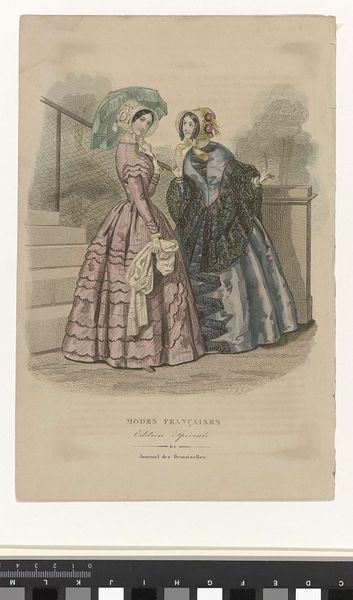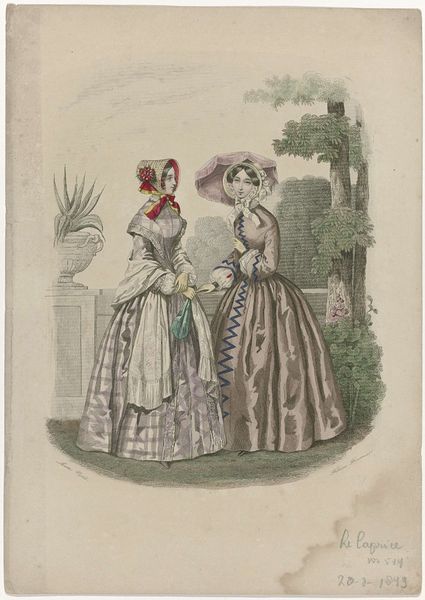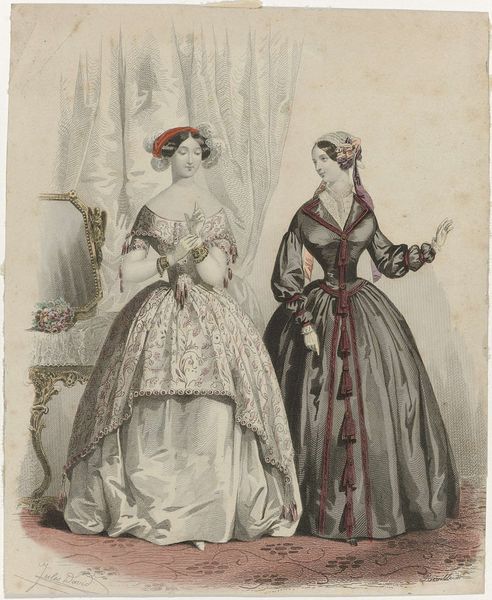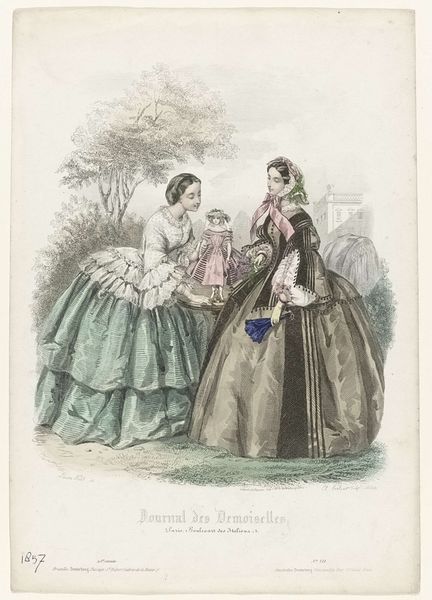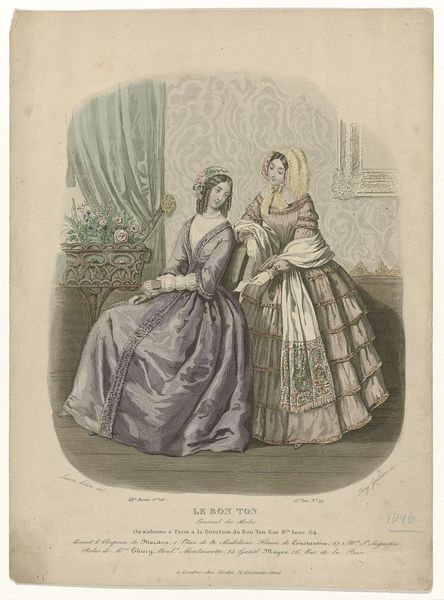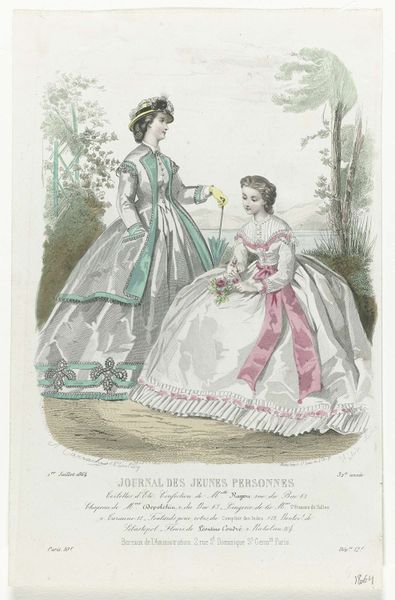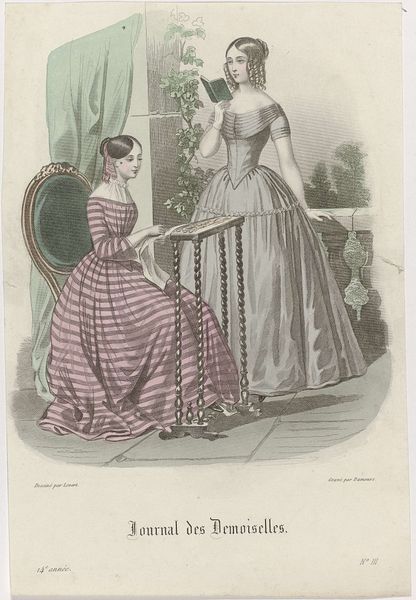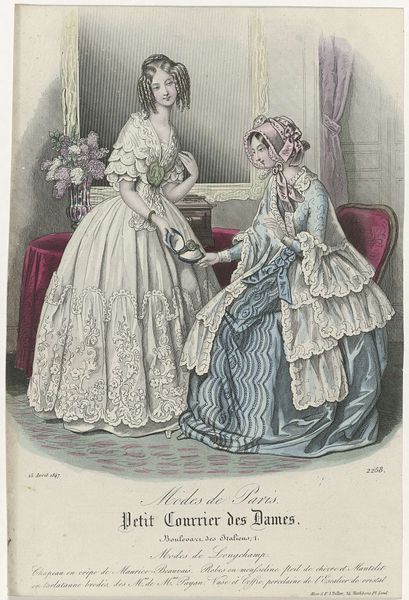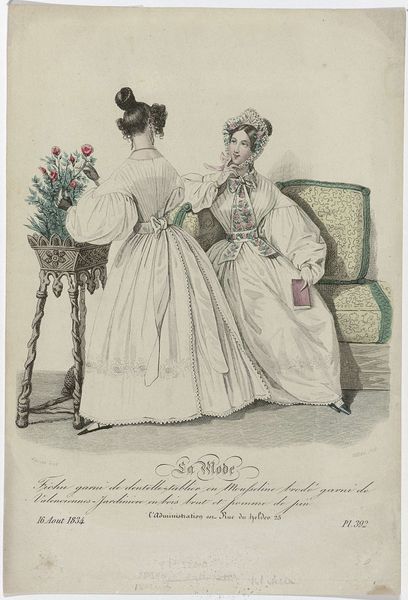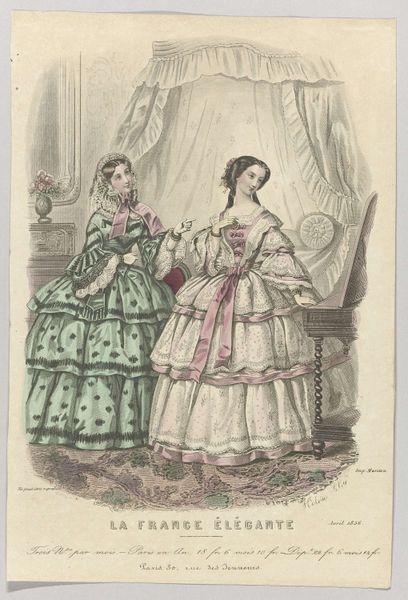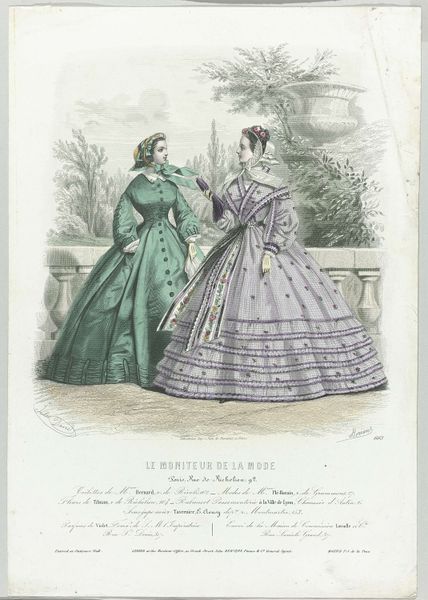
Petit Courrier des Dames, 10 mai 1849, No. 2433 : Chapeau et Coiffur (...) 1849
0:00
0:00
jeancharlesmichelbarreau
Rijksmuseum
drawing, print, paper, ink
#
portrait
#
drawing
# print
#
flower
#
figuration
#
paper
#
ink
#
romanticism
#
watercolour illustration
#
genre-painting
#
dress
Dimensions: height 270 mm, width 186 mm
Copyright: Rijks Museum: Open Domain
Editor: This print, "Petit Courrier des Dames, 10 mai 1849, No. 2433 : Chapeau et Coiffur (...)" created in 1849 by Jean-Charles-Michel Barreau, seems like a glimpse into Parisian fashion. I'm immediately struck by the elaborate dresses, almost overwhelmingly ornate. How do you interpret this work within its historical context? Curator: Well, beyond just being a pretty picture of dresses, consider this image as a product and reflection of its time. Fashion prints like these played a crucial role in disseminating style trends. "Petit Courrier des Dames" served as a kind of proto-fashion blog, shaping tastes and desires, particularly within the rising bourgeoisie. It suggests who held the power in the 1840s. What message about women might the imagery contain? Editor: I suppose these images promoted a specific, perhaps idealized, role for women? That of being fashionable and ornamental? The dresses do look restrictive. Curator: Precisely. These prints helped construct and reinforce the visual culture surrounding femininity. The poses, the setting, the emphasis on luxurious fabrics; it all contributes to a very specific, and limited, idea of women in the public imagination. These were essentially advertisements dictating trends in fabric, millinery and dressmaking which shaped trade and socio-economic activity in Paris at that time. Do you see any challenges for museums today that come to mind from this? Editor: Hmm, yes. We need to be mindful of the implicit biases within our collections, and how they’ve historically shaped perspectives and norms. Curator: Absolutely. And by critically examining pieces like this fashion plate, we can spark important conversations about gender, class, and the power of imagery in shaping society. Editor: That makes so much sense. I had focused solely on the aesthetic and now understand it to be embedded within networks of communication and social control. Curator: Exactly, and it all works through what we deem to be the politics of imagery.
Comments
No comments
Be the first to comment and join the conversation on the ultimate creative platform.

